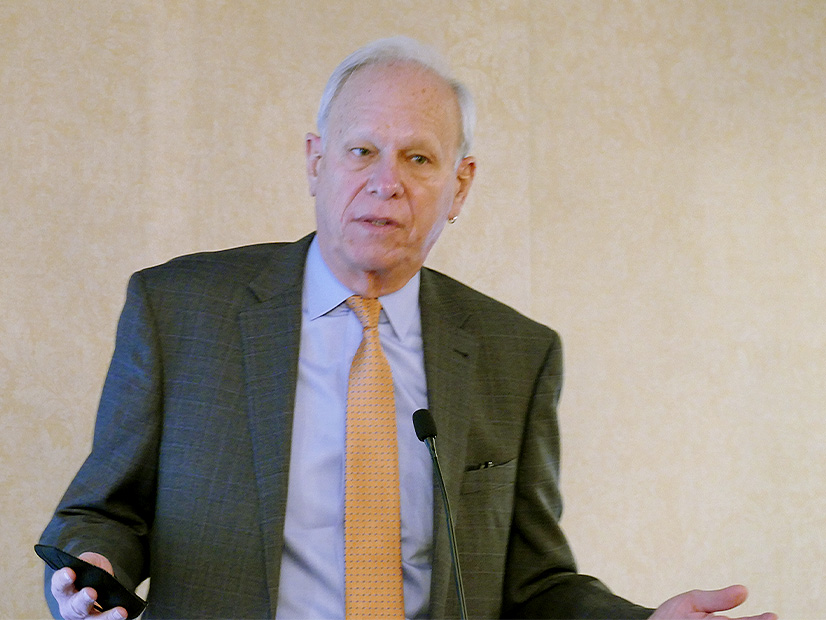The Maryland Senate late Monday approved legislation increasing the state’s greenhouse gas emission reduction goal to 60% below 2006 levels by 2030 — up from the current 40% target — and setting a 2045 deadline for reaching net-zero emissions (SB 528).
The Climate Solutions Now Act of 2022, which must also be approved by the House of Delegates, would target landfill methane emissions, set new energy conservation standards for buildings and require the purchase of zero-emission vehicles (ZEVs) for public school buses and the state fleet.
The bill, sponsored by Sen. Paul G. Pinsky (D), chair of the Senate Education, Health and Environmental Affairs Committee, cleared the Senate on a 32-15 vote, with all Republicans opposed.
The vote came after Pinsky last week withdrew a requirement that all new buildings use electric power, rather than fossil fuels, for space and water heating by 2024 and a mandate that new buildings be equipped to install solar energy systems and electric vehicle charging. Instead, the legislation requires the Public Service Commission to report to the legislature by September 2023 whether the electric grid can support an all-electric building code in the future.

Pinsky tweeted that the bill was “a major step forward but weakened by the utility industry that placed their profits ahead of people & the environment.”
Last year, negotiations to increase the state’s emissions-reduction target collapsed after the Senate rejected House revisions that would have set the state’s 2030 goal at only 50% of 2006 levels. (See Md. Climate Bill Dies in House-Senate Standoff.)
Among other provisions, SB 528:
-
-
- Requires the Maryland Department of the Environment to adopt standards for methane emissions for municipal solid waste landfills by 2024 that are at least as stringent as those adopted by California.
- Creates a Climate Justice Corps Program for 18- to 25-year-olds to work on clean energy or climate mitigation projects.
- Requires a transition to zero-emission school buses: Beginning in fiscal 2024, county school boards would be prohibited from signing contracts to purchase or use any school bus that is not a zero-emission vehicle (ZEV) unless the school board is unable to obtain federal, state, or private funding to cover the “incremental costs” of ZEVs or there are no available ZEVs to meet the district’s performance requirements.
- Transitions the state vehicle fleet to ZEVs: The bill sets a goal that all passenger cars in the state vehicle fleet be ZEVs by 2030 and that other light-duty vehicles in the fleet be ZEVs by 2036. It would require the state to make ZEVs 25% of all passenger cars purchased in fiscal 2023, rising to 100% beginning in fiscal 2027. Beginning in fiscal 2024, any passenger car purchased for the state fleet that is not a ZEV must be a hybrid vehicle.
- Creates the Climate Catalytic Capital Fund, administered by the Maryland Clean Energy Center to promote environmental justice and to leverage private capital investment in technology development and deployment, including project planning. Minimum annual funding for fiscal 2024 through 2026 would be $5 million.
- Requires annual funding of $12 million from fiscal 2024 through 2032 to help school systems cover the cost difference between meeting basic high-performance building requirements and net-zero energy requirements. Subject to funding, at least one of the schools constructed in each school system from July 2023 through June 2033 would be required to meet net-zero energy requirements. During the same period, districts would have to consider including rooftop solar panels on new schools.
- Requires funding of $5 million annually in fiscal 2024-26 for projects to reduce direct GHG emissions from multifamily residential buildings.
- Requires development of performance standards for “covered” buildings (non-school or historic buildings of at least 25,000 square feet) owned by the state: a 50% reduction in net direct GHG emissions by January 2030 compared with 2025 levels and net-zero direct GHG emissions by 2035. For covered buildings not owned by the state it requires a reduction of at least 30% in GHG emissions by 2035 and net-zero emissions by 2040.
-
The House of Delegates has been considering SB 528’s provisions in three bills heard by separate committees.
“It’s my understanding that the House is actually going to work off the Senate bill versus those three independent bills,” Kim Coble, co-chair of the Greenhouse Gas Mitigation Working Group, told a working group meeting Tuesday.
She said the Senate Budget and Tax Committee on Monday endorsed the funding for implementing the Pinsky bill. “So that is embedded in the budget at this point in time,” said Coble, who represents the Maryland League of Conservation Voters.
Working group member Sandy Hertz, of the Department of Transportation, noted that the bill passed by the Senate struck a provision making the state fleet EV targets “subject to the availability of funding.”
The bill said that “it will be done, regardless of whether or not you have the funding set aside for it,” Hertz said. “That was one thing that stood out to me as fairly impactful to us at the state level.”



